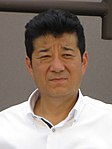2022 Japanese House of Councillors election
| |||||||||||||||||||||||||||||||||||||||||||||||||||||||||||||||||||||||||||||||||||||||||||||||||||||||||
124 of the 245 seats in the House of Councillors 123 seats needed for a majority | |||||||||||||||||||||||||||||||||||||||||||||||||||||||||||||||||||||||||||||||||||||||||||||||||||||||||
|---|---|---|---|---|---|---|---|---|---|---|---|---|---|---|---|---|---|---|---|---|---|---|---|---|---|---|---|---|---|---|---|---|---|---|---|---|---|---|---|---|---|---|---|---|---|---|---|---|---|---|---|---|---|---|---|---|---|---|---|---|---|---|---|---|---|---|---|---|---|---|---|---|---|---|---|---|---|---|---|---|---|---|---|---|---|---|---|---|---|---|---|---|---|---|---|---|---|---|---|---|---|---|---|---|---|
| |||||||||||||||||||||||||||||||||||||||||||||||||||||||||||||||||||||||||||||||||||||||||||||||||||||||||
 Election results | |||||||||||||||||||||||||||||||||||||||||||||||||||||||||||||||||||||||||||||||||||||||||||||||||||||||||
| |||||||||||||||||||||||||||||||||||||||||||||||||||||||||||||||||||||||||||||||||||||||||||||||||||||||||
House of Councillors elections will be held in Japan by 25 July 2022 to elect 124 of the 245 members of the House of Councillors, the upper house of the then 710-member bicameral National Diet, for a term of six years.
Seventy-four members will be elected by single non-transferable vote (SNTV)/First-past-the-post (FPTP) voting in 45 multi- and single-member prefectural electoral districts. The nationwide district will elect 50 members by D'Hondt proportional representation with optionally open lists; the previous most open list system was modified in 2018 to give parties the option to prioritize certain candidates over the voters' preferences in the proportional election.[1][2]
The election will occur within the first year of Fumio Kishida's term as Prime Minister, and it will see Kenta Izumi debut as the leader of the opposition CDP.
References[]
- ^ NHK kaisetsu blog archive, 19 July 2018: 「参院定数6増 比例特定枠導入~選挙制度改革行方は」(時論公論)
- ^ MIC, electoral system news, 24 October 2018: 参議院議員選挙制度の改正について
- 2022 elections in Asia
- House of Councillors (Japan) elections
- 2022 in Japan
- Future elections in Japan
- Japanese election stubs








